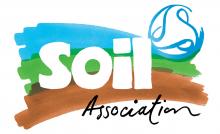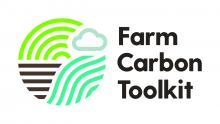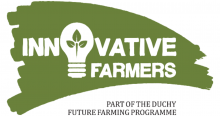Weaning shock causes physiological stress and can cause a sudden increase in worm burden in lambs. This effect can be offset by plant chemicals such as tannins, but also by enhanced forage protein content. Research suggests that higher tannin levels which commonly occur species such as trefoil and plantain also reduce faecal egg counts.
Chicory is also well known to reduce intestinal worm burden. Forage legumes are central to providing crude protein, and white clover is the commonly used species for this purpose in leys but not in cover crops. Therefore, in contrast to a brassica-based control cover crop, a protein and tannin-rich mixture will potentially reduce worm burden at weaning shock.
The chicory-rich ley used in this field lab has the potential to:
- Reduce the need for wormers
- Improve lamb welfare
- Enhance growth rates
- Improve soil health in comparison to to simple brassica cover crops or ryegrass white clover leys
- Increase soil carbon
- Reduce lamb-production footprint
- Fit with SFI Herbal Leys payment options
To examine the effect of a protein rich cover crop, each farm will choose one field to split in half:
- One half is Mainstar forage rape (control)
- One half is a cover crop mixture of chicory, crimson clover and plantain
Three of the farms will also test the use of a chicory rich herbal ley, choosing another field to split in half:
- One half is a standard grass clover ley (control)
- One half is the cover crop mixture of chicory, crimson clover and plantain
The leys will be established in spring 2024 and ready to graze at the time of weaning. The fields will be strip grazed by the weaned ewe lambs using a strip-based system, with daily movement of livestock.
The following assessments will take place:
- Lambs will be weighed onto the field and off the field by the farmers
- Faecal egg counts for intestinal worm burden will be carried out by the researcher for each cohort of lambs at each farm
- Body condition scoring to quantify welfare
- Soil health parameters will be assessed prior to the first graze, at 3 points across each trial plot. These include infiltration, worm counts, aggregate stability and soil structure
- Yield and forage quality of the grazing wedge will be sampled 3 times per field over the trial period, and at 3 points across each trial plot
- Species presence and diversity will be assessed to determine which species established and which species were dominant
- Use of medication (if required) will be noted
- Carbon footprinting of the lamb will take place for each farm, using the trial data to model future emissions if the most successful management practice is adopted
For more informaion and to keep updated on the trial see the Innovative Famers website.





